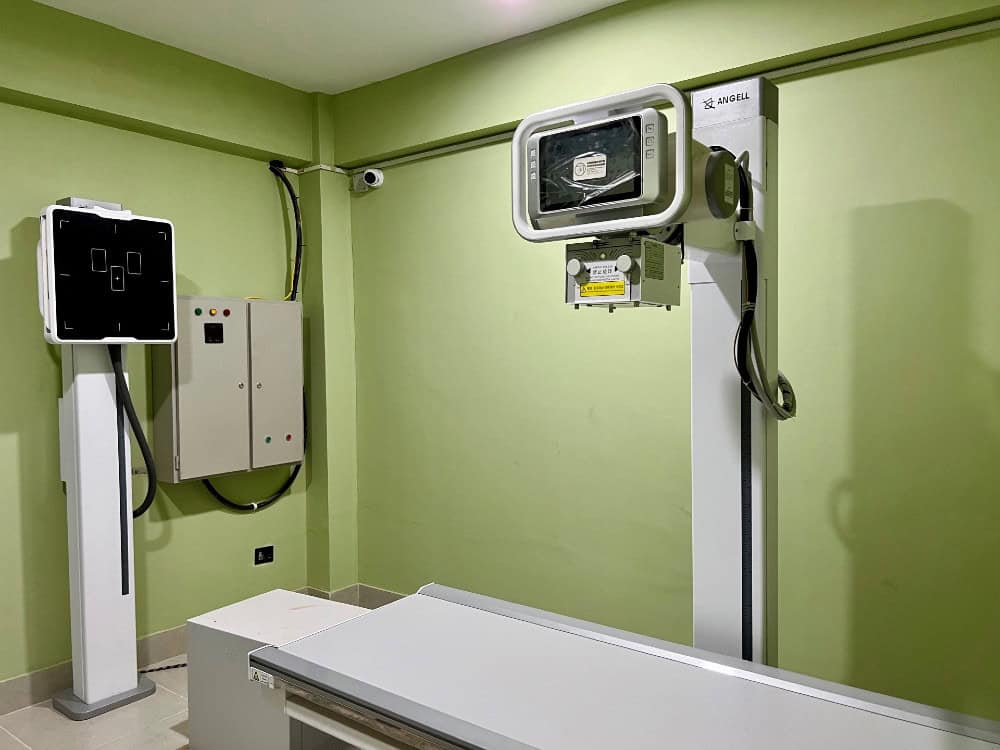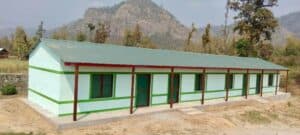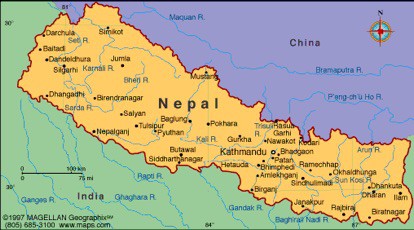FACTS ABOUT NEPAL
Geography and politics
Nepal, officially the Federal Democratic Republic of Nepal, is a landlocked country in South Asia, lying between China and India in South Asia.
The country ended its longstanding constitutional monarchy in June 2008 when King Gyanendra, who had come to power in 2001 after the tragic murder of the previous king, abdicated the throne. Nepal’s first president was chosen by parliament the following month. This precipitous government transformation came after nearly 20 years of political turmoil, including an often violent Maoist insurgency from 1996 until 2005.
Economy
Nepal is one of the poorest countries in the world. Industry includes tourism, carpets, textiles; small rice, jute, sugar, and oilseed mills; cigarettes; cement and brick production. Agriculture is of rice, corn, wheat, sugarcane while exports include carpets, clothing, leather goods, jute goods, grain.
Everest
Nepal possesses the greatest altitude variation on the Earth, from the lowlands near sea level to Mount Everest at 8,850 meters (29,035 feet). Everest, named after British surveyor Sir George Everest, is known as Chomolungma by the local Sherpas, meaning “Goddess Mother of the World” — related to this is the Chinese name Qomolangma. The Nepali word for Everest, Sagarmatha, is often translated as “Forehead of the Sky.”
People
With a population of 26.4 million, Nepal is a multiethnic nation with Nepali as the official language. Kathmandu is the nation’s capital and largest city.
Most Nepalese live in the central, hilly region, which embraces the Kathmandu Valley, and in the southern plain known as the Terai.
- Population: 26.4million
- Capital: Kathmandu
- Area: 147,181 square kilometers (56,827 square miles)
- Language: Nepali, English, many other languages and dialects
- Religion: Hindu, Buddhist, and Muslim
- Currency: Nepalese rupee
- Life Expectancy: 59
- Literacy Percent: 45
- Population of Kathmandu Metropolitan City: 1,003, 285 (Wikipedia)
CHANCE for NEPAL focusses on the children of Nepal because, out of 100
Children in Nepal….
- 86 live in villages
- 14 live in cities
- 90 are immunized
- 40 are suffering from malnutrition and are affected by diseases through it.
- 40 belong to extremely poor families
- 80 are admitted to school, but only 51 complete the primary level
- 86 boys and 74.6 girls are enrolled in primary level school
Further Facts About The Children Of Nepal
- 32,000 children are working in stone quarries
- Twelve thousand Nepali girls are sold in India every year.
- The child mortality rate of children below 5 years of age is 61 per 1000 birth.
- 41% of the total population are children below 16 years of age
- 27, 000 children die of diarrhea every year – 52% of the population do not have toilets
- Out of 2.5 million disabled people, 5% are children
- There are approximately five thousand street children in Nepal.
- There are 2.6 million child labors in Nepal.
- HIV infects 1088 children below 19 years of age.
- The infant mortality rate of below 1 year of age is 48 per 1000 birth.
- Children aged below 16 years constitute 40.93 percent of the total population.
- 87.4% of children are admitted in primary level school. However, about
- 40% stop school before primary level complete.
ABOUT US
Donations
If you would like to make a donation to Chance for Nepal simply click below to view the different donation options available.
LATEST POSTS
Burns Violence Survivors (BVS) ‘Jingles’ Radio Broadcast on the prevention of burns
May 2024, we funded a daily radio broadcast during early evening when most Nepalese families tend to have dinner. These broadcasts will be aired every day for 6 months. The broadcasts start with a ‘jingle’

ON LINE – AUCTION of PROMISES
On the 30th April 2023 we held out first on-line auction. Our fabulous patron, Dame Joanna Lumley introduced the auction via a video link. The auction was to raise funds for an x-ray machine for

SHREE CHOKUNEY SCHOOL – KUMALA, Surkhet
SHREE CHOKUNEY SCHOOL – KUMALA, Surkhet We are delighted to introduce our 8th school which has been made possible by a generous donation of £6,000 from Rosy and Peter Gent, this being the third school

